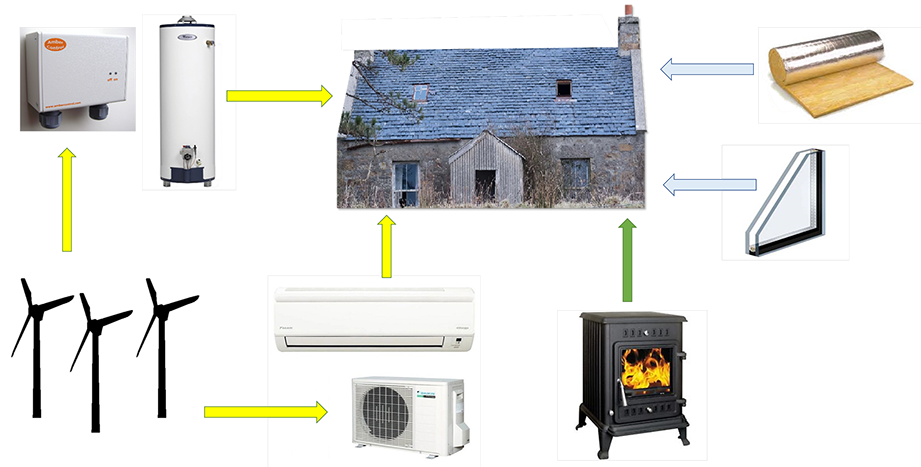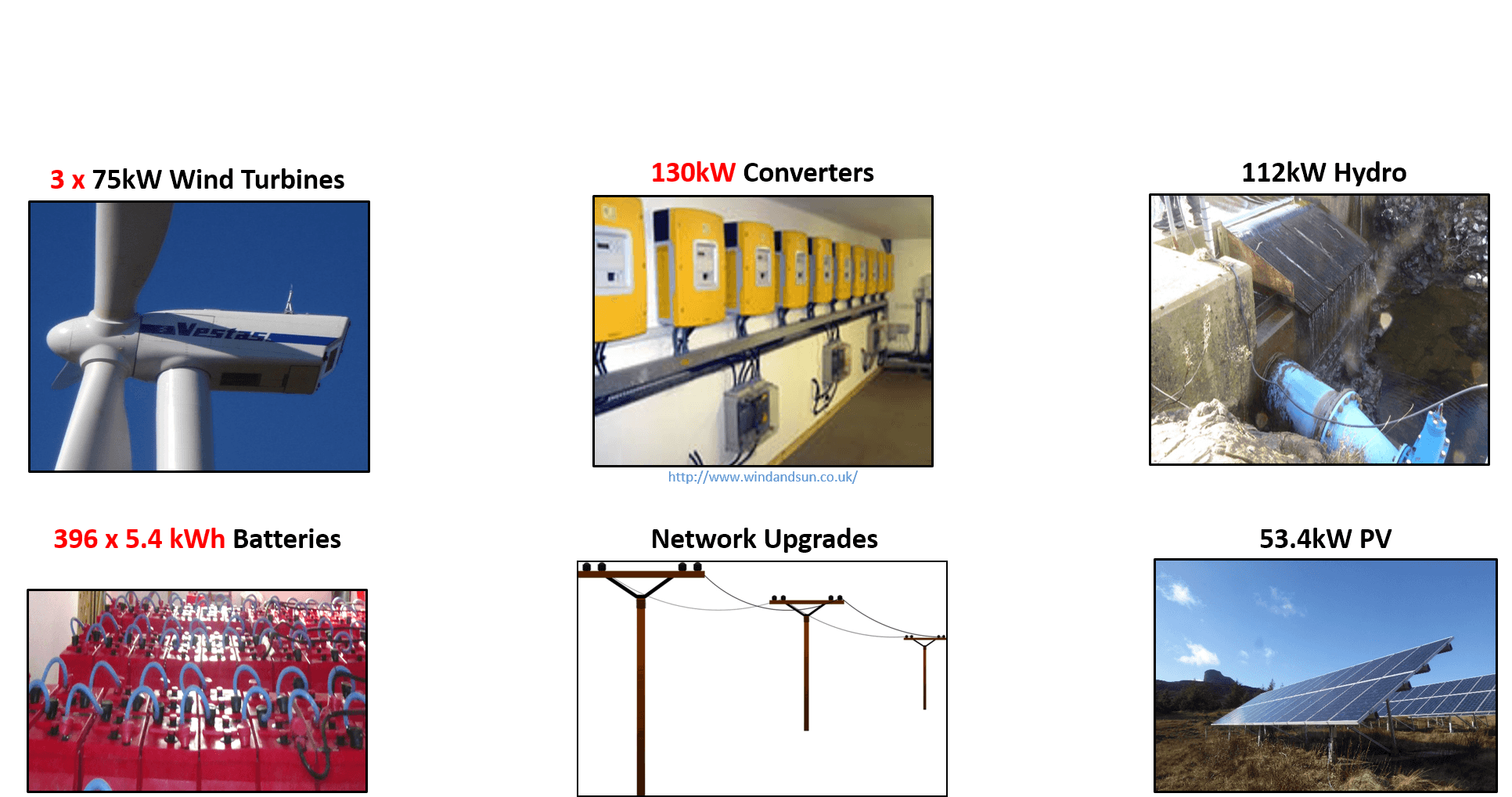Optimal Solution

The schematic above shows which upgrades that will be implemented to houses on Eigg. To keep the overall costs as low as possible only the 21 poorest insulated houses will be upgraded, as this was found to be the most cost optimal solution.
The main space heating will be provided by ASHPs in an air-to-air configuration. The heat pumps will be powered by the microgrid, which will have been upgraded by the addition of three 75kW wind turbines. However, there may be periods when there is not enough electricity to run the heat pumps. In this case, homes would be advised to switch to biomass wood stoves. It has been estimated that the heat pumps would provide at least 80% of the space heating demand, while biomass would supply the remaining 20%. Theoretically, the biomass may provide upwards to 32%, thus there is substantial contingency.
Hot water will also be provided through electricity, but not through the heat pumps, as they are in an air-to-air configuration. There are periods when there is electricity available in the network that is not being used, for example in the night. The electricity will then be used to heat hot water through frequency controlled switches and immersion heaters, which will be stored in an insulated hot water tank. This is effectively a cheap, load-shifting, energy storage strategy.
The total capital cost for all systems and upgrades would be £2,863,200.

3 x 75kW Vestas Wind Turbines
396 Rolls Solar batteries
112kW Hydro (as currently)
130kW Sunny Island converters
53.4kW PV (as currently)
Network Upgrades
© University of Strathclyde | TEC Eigg | Sustainable Engineering 2016